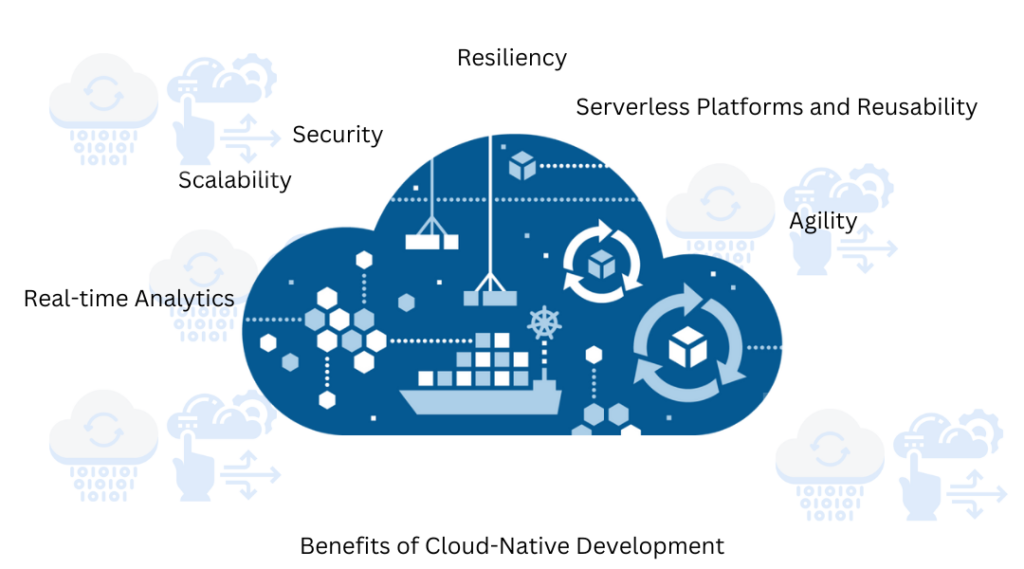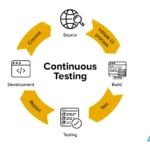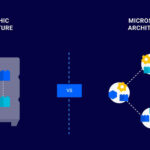
Cloud-native development is reshaping the way software is built, deployed, and managed. As organizations shift from traditional, monolithic applications to modern cloud-native architectures, DevOps has evolved to accommodate new workflows, automation strategies, and scalability requirements. By leveraging microservices, containers, Kubernetes, and continuous integration and deployment (CI/CD), cloud-native development enables faster releases, greater flexibility, and seamless scalability. This transformation is not just a technological shift but also a cultural one, changing the way development and operations teams collaborate to deliver high-performing, resilient applications.
Accelerating Software Delivery with CI/CD
One of the most significant impacts of cloud-native development on DevOps is the acceleration of software delivery. Traditional software development often relied on slow, manual deployment processes, making frequent updates challenging. With the adoption of CI/CD pipelines, code changes can be automatically tested, integrated, and deployed, allowing organizations to release software at an unprecedented speed. Cloud-native environments enhance this process by eliminating bottlenecks and ensuring that every update is seamlessly pushed to production with minimal downtime. Developers can now focus on innovation rather than being bogged down by operational inefficiencies.
Scaling Applications with Ease
Scalability is a defining feature of cloud-native development. Unlike traditional infrastructure, which required significant manual intervention to handle increased workloads, cloud-native applications scale dynamically based on demand. Kubernetes, as an orchestration tool, plays a crucial role in managing containers efficiently, distributing workloads, and ensuring high availability. This automatic scaling not only enhances performance but also optimizes resource utilization, reducing costs while maintaining seamless user experiences. Whether dealing with sudden spikes in traffic or global application deployments, cloud-native DevOps ensures applications remain responsive and resilient.
Breaking Down Silos Between Development and Operations
Cloud-native DevOps fosters a more collaborative approach between development and operations teams. In the past, these teams worked in silos, leading to communication gaps, deployment failures, and inefficient workflows. With cloud-native architectures, both teams share a common infrastructure and automation framework, enabling a more integrated approach to software development and operations. Tools like GitOps further enhance this collaboration by allowing infrastructure and application configurations to be managed through version control, ensuring transparency, consistency, and repeatability in deployments.
Embedding Security into DevOps with DevSecOps
Security has traditionally been a concern addressed at the final stages of development, often leading to vulnerabilities and compliance issues. Cloud-native DevOps integrates security throughout the software development lifecycle through a practice known as DevSecOps. Automated security checks, policy enforcement, and real-time threat detection become integral parts of the pipeline, ensuring that applications are secure from the outset. By embedding security into every phase of development, organizations can mitigate risks proactively rather than reacting to threats after deployment.
Optimizing Costs and Resource Utilization
Cloud-native development offers a cost-efficient approach to resource management. Instead of maintaining expensive on-premises infrastructure, organizations can leverage pay-as-you-go cloud models, ensuring that resources are only allocated when needed. Serverless computing takes this a step further, allowing applications to run without requiring constant provisioning and management of servers. By eliminating unnecessary resource consumption, cloud-native DevOps not only improves efficiency but also significantly reduces operational costs.
Overcoming Challenges in Cloud-Native DevOps
Despite its advantages, transitioning to cloud-native DevOps presents challenges. Managing microservices can be complex, requiring teams to adopt new tools and skills. Monitoring and observability become critical in distributed environments, where traditional logging methods may not provide complete visibility into application performance. Security concerns also arise, as increased complexity can create new vulnerabilities if not properly managed. However, by investing in automation, advanced monitoring solutions, and proper training, organizations can successfully navigate these challenges and maximize the benefits of cloud-native development.
Looking Ahead: The Future of Cloud-Native DevOps
The future of cloud-native DevOps is set to be even more dynamic, with advancements in artificial intelligence (AI) and automation playing a significant role. AI-driven monitoring tools will enhance system reliability by predicting failures before they occur. Serverless architectures will continue to evolve, reducing the need for infrastructure management and allowing developers to focus purely on application logic. Multi-cloud and hybrid cloud strategies will provide greater flexibility, preventing vendor lock-in and ensuring resilience across diverse environments.
Cloud-native development is not just a trend—it’s the future of software engineering. Organizations that embrace this approach will be better positioned to innovate, scale, and compete in a digital-first world. By integrating cloud-native principles with DevOps methodologies, businesses can achieve faster development cycles, improved security, and unparalleled operational efficiency. The shift is already happening—are you ready to embrace it?
Follow us for more Updates














